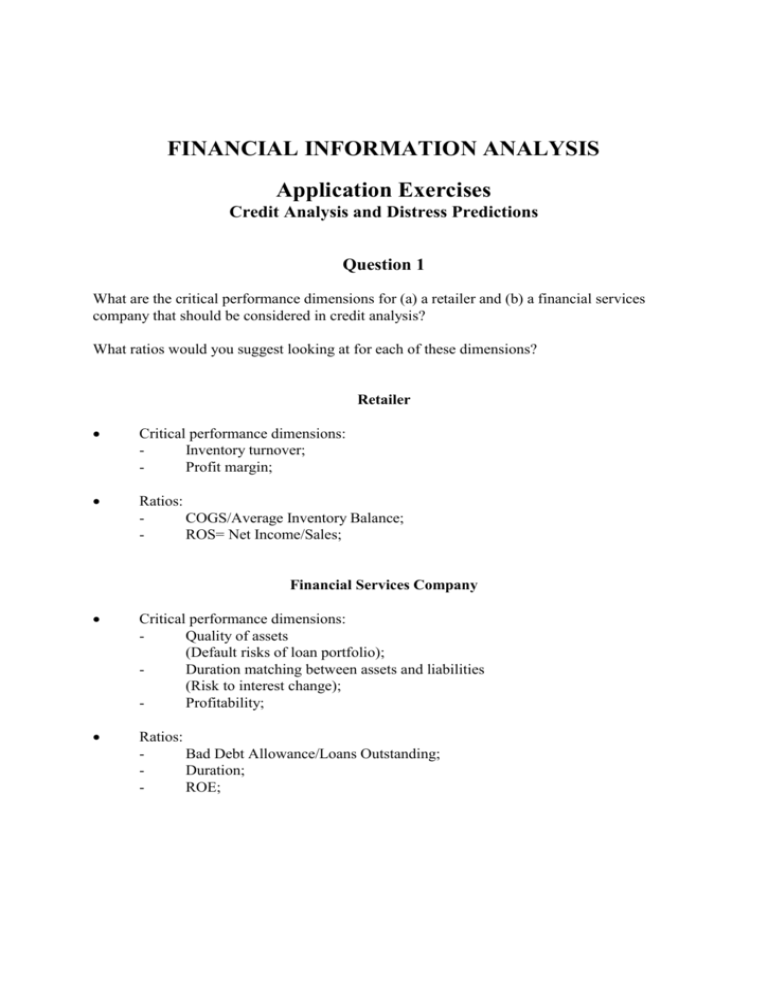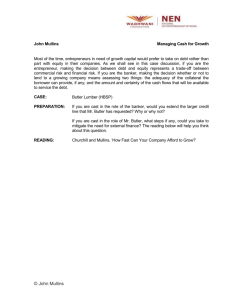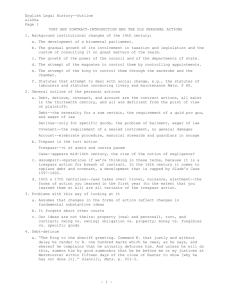FIA 9X Copies - Haas School of Business
advertisement

FINANCIAL INFORMATION ANALYSIS Application Exercises Credit Analysis and Distress Predictions Question 1 What are the critical performance dimensions for (a) a retailer and (b) a financial services company that should be considered in credit analysis? What ratios would you suggest looking at for each of these dimensions? Retailer Critical performance dimensions: Inventory turnover; Profit margin; Ratios: COGS/Average Inventory Balance; ROS= Net Income/Sales; Financial Services Company Critical performance dimensions: Quality of assets (Default risks of loan portfolio); Duration matching between assets and liabilities (Risk to interest change); Profitability; Ratios: Bad Debt Allowance/Loans Outstanding; Duration; ROE; Question 4 Many debt agreements require borrowers to obtain the permission of the lender before undertaking a major acquisition. Why should the lender want to include this type of restriction? When a firm is in financial difficulty, conflicts may arise between debtors and stockholders; Since the stock has an option value, a major acquisition of risky assets under financial distress can increase the value of stock but decrease the value of debt; To protect against the possibility of increased business risk, lenders establish debt covenants that borrowers obtain permission of the lender before making a major acquisition; Question 6 Cambridge Construction Company follows the percentage-of-completion method for reporting long-term contract revenues; The percentage-of-completion is based on the cost of materials shipped to the project site as a percentage of total expected material costs; Cambridge’s major debt agreement includes restrictions on net worth, interest coverage, and minimum working capital requirements; A leading analyst claims that “the company is buying its way out of these covenants by spending cash and buying materials, even when they are not needed”. Explain how this is possible. Under this revenue recognition rule, Cambridge can accelerate revenue (and net income) recognition by purchasing materials; Suppose that the company purchased $70 of raw materials when its cost of goods sold is 70% of sales and its profit margin is 10%. The accounting entries for this purchasing transaction are as follows: Debit Inventory by $70 and Credit Accounts Payable by $70; Credit Sales by $100 and Debit Accounts Receivable by $100; Debit Other Expenses by $20 and Credit Accounts Payable by $20; Net Income, Net Worth, and Working Capital all increase by $10; Under the Cambridge Construction Company’s accounting policy, the $70 purchase of materials: Relaxes the Net Worth debt covenant! Relaxes the Interest Coverage debt covenant! Relaxes the Minimum Working Capital debt covenant! Question 7 Can Cambridge improve its Z score by behaving as the analyst claims in Question 6? Is this change consistent with economic reality? Cambridge can improve its Z score by accelerating revenue recognition even if this change is not consistent with economic reality; Accounting choice in Question 6 positively influences all of the 5 components of the Altman Z-score: Net working capital/total liabilities; Retained earnings/total assets; EBIT/total assets; Shareholders’ equity/total liabilities; Sales/total assets; Purely quantitative models, such as the Altman Z-score, can not substitute for business strategy analysis, accounting analysis, financial analysis, and prospective analysis; Question 8 A banker argues: “I avoid lending to companies with negative cash from operations because they are too risky”. Is this a sensible lending policy? No! A banker should decide whether the borrowing firm has the ability to service the debt at the scheduled rate; Current period negative cash flow from operations is one of the factors that the banker needs to consider but it is not the only factor; A banker should ask the following questions: Can the company turn around its cash flows in future periods? Can the bank secure the loan with sufficient collateral in lending to the company? Is there any third-party loan guarantee?











